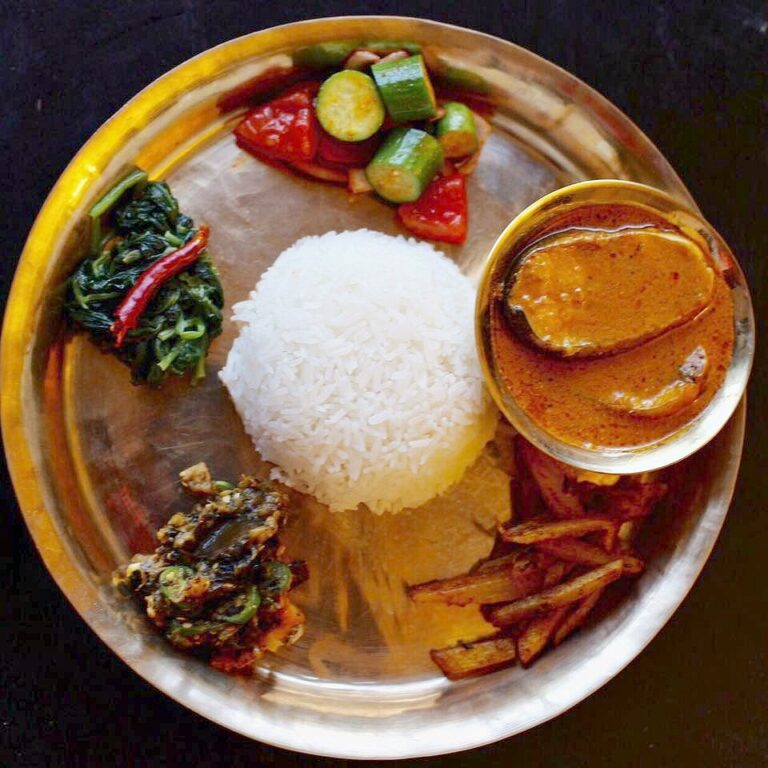Introduction: Dining in Nepal
Dining in Nepal is a delightful experience for both locals and tourists alike. Nepali cuisine is known for its unique blend of flavors and spices, which reflect the country’s diverse cultural and ethnic heritage. Nepalese dining culture has its own set of customs and etiquettes that are observed during meals.
Traditional Food & Drinks in Nepalese Cuisine
The traditional food in Nepalese cuisine is primarily based on rice, lentils, and vegetables. Dal bhat, a dish consisting of lentil soup, rice, and vegetables, is considered a staple food in Nepal. Other popular Nepalese dishes include momos (steamed dumplings), thukpa (noodle soup), and chow mein (stir-fried noodles).
Nepal also has a unique selection of drinks, including the popular chiya (milk tea), raksi (a distilled alcoholic beverage made from grains or fruits), and tongba (a fermented millet drink). These traditional foods and drinks are often served during meals in Nepalese households and restaurants.
Eating Habits & Table Manners in Nepal
In Nepalese culture, eating with one’s hands is a common practice. The right hand is used for eating, while the left hand is used for pouring water or holding the plate. It is considered impolite to touch food with the left hand or to lick one’s fingers after finishing a meal.
In formal settings, Nepalese dining etiquette requires guests to wait for the host to begin eating before starting their meal. It is also customary to offer food to others before starting to eat oneself. During meals, it is common to engage in polite conversation and to show appreciation for the food being served.
Common Nepalese Dining Customs & Etiquette
Nepalese dining customs vary depending on the occasion and the region. In some parts of Nepal, it is customary for guests to bring a small gift, such as fruit or sweets, to the host’s home. The host may also offer guests a small gift in return.
In Nepalese culture, it is customary to leave a small amount of food on one’s plate as a sign of gratitude and respect for the food being served. Additionally, it is considered impolite to waste food or leave the table before the meal is finished.
Festive & Ritualistic Dining Practices in Nepal
Nepal has several festive and ritualistic dining practices that are observed during special occasions. During festivals such as Dashain and Tihar, families gather to share traditional meals and exchange gifts. It is common to serve a variety of dishes during these celebrations, including meat, fish, and sweets.
In some parts of Nepal, certain foods are associated with specific rituals. For example, during the Newari festival of Yomari Punhi, a sweet dumpling made from rice flour and stuffed with molasses or sesame seeds is prepared and offered to the gods.
Conclusion: Experiencing Nepalese Dining Culture
Nepalese dining culture is rich and diverse, reflecting the country’s unique cultural and ethnic heritage. Whether enjoying a simple meal at a local restaurant or participating in a festive celebration, experiencing Nepalese dining culture is an opportunity to learn more about the country’s traditions and customs. By observing the local customs and etiquettes, visitors can gain a deeper appreciation for Nepalese cuisine and its role in the country’s culture.

